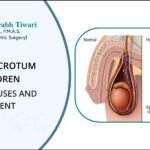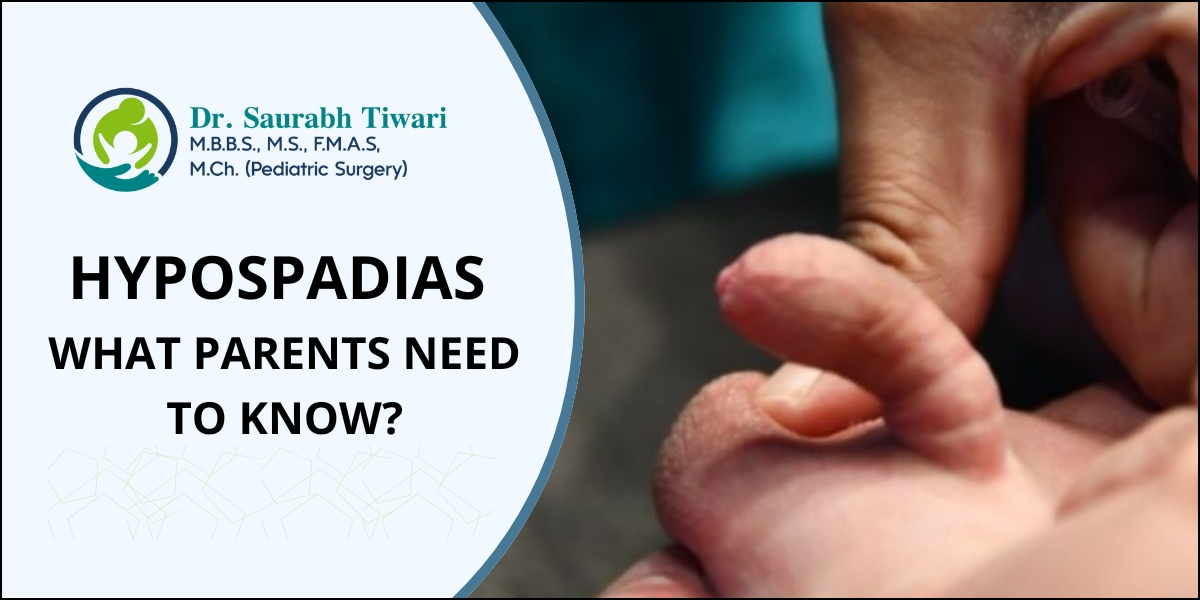Receiving a diagnosis of hypospadias for your newborn son can be overwhelming and raise many questions. It’s important to know that you are not alone, and this is a relatively common condition that is highly treatable with modern pediatric surgery. This guide aims to provide clear, reassuring information for parents navigating this diagnosis.
What is Hypospadias?
Hypospadias is a congenital condition (present at birth) where the opening of the urethra (the meatus) is not located at the tip of the penis. Instead, it can be found anywhere along the underside of the shaft, from just below the tip to the scrotum or perineum. It occurs in about 1 in every 200-300 male births and is often accompanied by a downward curvature of the penis (chordee) and a hooded foreskin where the foreskin is incomplete on the underside.
What Causes Hypospadias?
The exact cause is not fully understood, but it is believed to be a combination of genetic, hormonal, and environmental factors. During fetal development between weeks 8 and 14, hormones trigger the formation of the urethra and foreskin. An interruption in this process can lead to hypospadias. While there’s often no single clear cause, factors like family history, maternal age over 35, and certain hormonal exposures during pregnancy may play a role.
How is Hypospadias Treated?
The primary treatment for hypospadias is surgery. The goals of hypospadias repair are to:
- Reposition the urethral opening to the tip of the penis.
- Correct any penile curvature (chordee) to allow for straight erections.
- Improve the cosmetic appearance, often by reconstructing the foreskin or performing a circumcision.
This surgery is typically performed when a child is between 6 and 18 months old. This age is ideal because anesthesia is safe, the child heals quickly, and the procedure occurs before there is lasting memory or significant psychological impact.
What to Expect After Surgery
Post-operative care is crucial for a successful outcome. Your surgeon will provide specific instructions, which often include:
- Managing discomfort with prescribed pain medication.
- Caring for a urinary catheter or stent for a short period (a few days to weeks).
- Keeping the area clean and dry.
- Preventing diaper rash and avoiding tight clothing.
- Attending follow-up appointments to ensure proper healing.
Most children recover remarkably well and can lead completely normal lives after healing.
Finding the Right Care: Why Expertise Matters
Hypospadias repair is a delicate and specialized procedure. Choosing an experienced pediatric urologist or surgeon is the most critical decision you can make. An expert ensures not only a successful functional outcome but also the best cosmetic result, which contributes to a child’s future self-esteem.
If your child has been diagnosed with hypospadias, seek a consultation with a specialist to discuss the best path forward. Dr. Saurabh Tiwari, a renowned hypospadias surgeon in Mumbai, offers expert consultation and advanced surgical care for this condition.
Frequently Asked Questions (FAQs)
1. Can a baby with hypospadias pee normally?
Yes, most babies with hypospadias can urinate normally. The stream may be misdirected (e.g., downwards) due to the position of the opening, but this is corrected with surgery.
2. Does hypospadias affect fertility?
Generally, no. A successfully repaired hypospadias does not affect fertility. The testicles and sperm production are normal. The surgery ensures normal sexual function and the ability to ejaculate semen correctly.
3. Is hypospadias surgery painful?
While any surgery involves some discomfort, modern pediatric anesthesia and pain management techniques ensure the child is comfortable during and after the procedure. Pain is carefully controlled with medication.
4. What is the success rate of hypospadias surgery?
In the hands of an experienced surgeon, the success rate for hypospadias repair is very high, often over 90-95%. “Success” means a straight penis, a terminal urethral opening, and a normal urinary stream.
5. At what age is hypospadias best treated?
The ideal window for hypospadias surgery is typically between 6 and 18 months of age. This timing leverages safe anesthesia, excellent healing, and minimal long-term psychological impact for the child.




